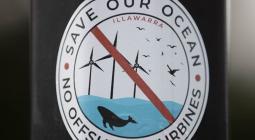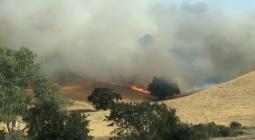‘It was total panic – with black smoke, falling fireballs and tongues of flame’: the terror of Chile’s wildfires
A long drought followed by exceptional heat and wind brought deadly blazes that ripped with devastating speed through the coastal town of Viña del Mar
On the afternoon of Friday 2 February, Danitza Hurtado was resting at home after work, unconcerned about the seasonal summer wildfires that had started in a nearby farm close to a nature reserve. By 6pm, she was frantically gathering belongings with her father and brother as fireballs rained down and a wall of black smoke crept up the hill towards their home in the Achupallas neighbourhood on the fringes of Viña del Mar, a coastal city of about 300,000 people.
“The wind was hitting us, and trees were falling on top of the house,” says the 22-year-old. “It was terrible. In less than 10 minutes, we had to get as much as possible out of the house and flee.”
They escaped, heading uphill as the blaze advanced with terrifying speed and intensity, igniting everything in its path. At the crest of the hill, they cowered with their neighbours in the only spot the flames could not reach as the raging inferno surrounded them, showering them with soot.
On the afternoon of Friday 2 February, Danitza Hurtado was resting at home after work, unconcerned about the seasonal summer wildfires that had started in a nearby farm close to a nature reserve. By 6pm, she was frantically gathering belongings with her father and brother as fireballs rained down and a wall of black smoke crept up the hill towards their home in the Achupallas neighbourhood on the fringes of Viña del Mar, a coastal city of about 300,000 people.
“The wind was hitting us, and trees were falling on top of the house,” says the 22-year-old. “It was terrible. In less than 10 minutes, we had to get as much as possible out of the house and flee.”
They escaped, heading uphill as the blaze advanced with terrifying speed and intensity, igniting everything in its path. At the crest of the hill, they cowered with their neighbours in the only spot the flames could not reach as the raging inferno surrounded them, showering them with soot.
“It is possible to rebuild. There is a sewerage system, electricity and water,” Danitza’s 75-year-old father, Juan, says. “But we will have to start from zero.”
Their nextdoor neighbour, Andrea Jaramillo, 48, is sleeping in a donated tent where her home once stood.
“It was like hell, but I’m grateful to the Lord to be alive,” she says tearfully. “I don’t care about losing the material things, but I still cry for the people who died.”
Other neighbours could not outrun the flames and perished. Some had returned to rescue pets, say the survivors, while police officers gather information from residents that will help them to find the bodies of those who have died.
“I have lived here for more than 20 years, and I weep because we never imagined this,” says Jaramillo, adding that other people have been generous in bringing food and water, but what they need, more than anything, is building materials.
“The city is completely in shock. We have never seen this,” says Nancy Díaz, a councillor for Viña del Mar, while visiting fire victims in the devastated El Olivar district. “Many people were trapped in the fire and could not escape, which is very painful for us,” she adds.
“It was total panic,” says Jorge Ojeda, 74, as he helps neighbours clear up rubble. “Everything was covered with black smoke, there were falling fireballs, and you could see the fire in the sky with tongues of flame passing back and forth.”
But as the rebuilding begins, climate scientists can’t rule out such blazes in the future – as the already warmer weather conditions continue to get hotter.
The fires broke out amid an exceptional heatwave that had drawn tourists to beach resorts in Viña del Mar and neighbouring Valparaíso. Typically cooled by a sea breeze, the coastal towns, about 75 miles (120km) northwest of the capital, Santiago, had already been enveloped in smoke from forest fires in the hills further inland.
The heat, arid conditions after 15 years of drought and extreme winds were the tinderbox combination that sparked and fuelled the blazes that razed entire neighbourhoods to the ground.
“These conditions were present with extraordinary intensity last weekend. That explains why the firefighters couldn’t contain the fire’s spread,” says Raúl Cordero, a climate scientist at the University of Santiago and the University of Groningen in the Netherlands.
The extreme conditions that push the spread of such fires have become known as “30-30-30”, when the temperature is more than 30C, humidity is less than 30%, and wind speed is more than 30 knots (34.5 mph).
“The deadliest and biggest fires are always in the places which have the most intense heatwaves: intense temperatures equal very intense fires,” Cordero says, explaining that the lack of rain was expected for the time of year, but the extraordinarily high temperatures were not.
“It is not normal to have a temperature of 36C in central Chile,” he says.
Even so, there are widespread rumours of arson, and officials have suggested that some of the fires could have been lit intentionally, pointing to evidence of flammable liquids being used.
Boric has said that anyone who started a fire would “face the full weight of the law and the repudiation of an entire society”.
But Cordero says the principal cause of the deadly wildfires is extreme weather and that, as the climate crisis worsens, Chile must prepare itself for more events like this. “Fires in Chile are not only increasing in size, they are killing more and more people,” he says.
Cover photo: Southern frontlines: Latin America and the Caribbean





